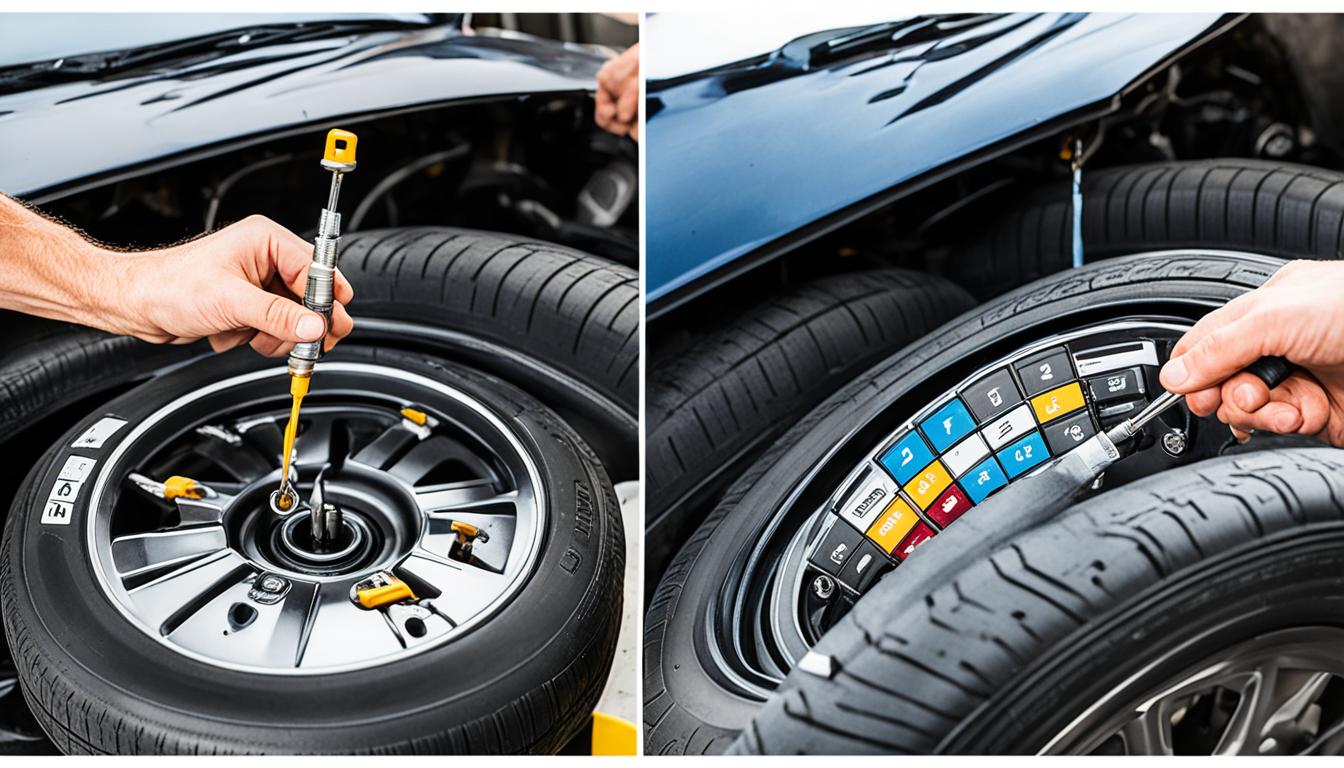All Categories
Featured
When it comes to lorry maintenance, tires are typically neglected, despite being an important variable in both security and performance. Understanding exactly how to pick the ideal tires for your lorry calls for knowing your driving problems, performance needs, and the different tire choices available.
![]()
All-Season Tires: These are the most usual type, developed for a selection of driving conditions, consisting of dry and wet roads. They offer a well balanced performance, making them an excellent option for everyday driving in regions with modest climates.
Summer Tires: Suitable for warmer environments, summer tires give excellent efficiency on damp and completely dry roadways, supplying superior grip and handling. Nevertheless, they are not suitable for snowy or icy conditions.
Winter Months Tires: Wintertime tires are specifically created to take care of snow, ice, and freezing temperatures. Made from a special rubber compound that continues to be flexible in winter, they feature deep treads that grip the roadway, offering better control and security in wintertime conditions.
Efficiency Tires: For those driving cars or seeking improved handling, performance tires provide greater responsiveness, cornering capacities, and boosted traction. These tires focus on efficiency however might sacrifice comfort and longevity.
225: The size of the tire in millimeters. 50: The facet proportion, or the elevation of the sidewall as a portion of the tire's width. R: Radial construction, which is one of the most usual layout for contemporary tires. 17: The size of the tire in inches, matching the size of the wheel. When changing your tires, it's usually best to match the original dimension for your vehicle to maintain the designated equilibrium of safety, handling, and comfort. Altering tire sizes can affect efficiency, including speedometer precision and gas performance.
![]()
Urban and City Driving: If a lot of your driving takes place on well-paved city streets, all-season tires are usually the ideal alternative. They offer adequate hold and convenience in modest problems, with a focus on efficiency.
Freeway Driving: For frequent freeway chauffeurs, tires that supply long-lasting durability and reduced roadway sound, such as visiting tires, are ideal. These tires provide a smooth trip and are optimized for gas efficiency over fars away.
Off-Road Driving: If you drive an SUV or truck and regularly venture off the beaten track, you'll require tires created for rugged terrain. All-terrain or mud-terrain tires use much better grip and sturdiness for driving on gravel, mud, or unpaved roads.
Symmetrical Footstep: Most all-season tires feature a symmetrical tread pattern, which gives a balanced efficiency for normal driving conditions. It's optimal for completely dry roadways, along with moderate damp problems.
Asymmetrical Tread: These tires have various step patterns on the outside and inside, boosting cornering and security. They offer a far better hold on both damp and completely dry roadways, making them a prominent choice for performance automobiles.
Directional Footstep: Created with a V-shaped pattern, these tires excel at funneling water far from the step. They offer much better grip in rainy and snowy problems, minimizing the threat of hydroplaning.
Inspecting Tire Pressure: Underinflated tires can adversely influence handling and fuel efficiency, while overinflated tires can raise the danger of blowouts. Check the tire stress on a regular basis and guarantee it satisfies the manufacturer's specifications.
Tire Rotation: To ensure even put on, tires ought to be revolved every 6,000 to 8,000 miles. Uneven wear can trigger premature tire failing and influence your car's placement and handling.
![]()
Wheel Positioning: Imbalance can create your tires to put on unevenly and negatively affect your automobile's handling. Have your car's placement checked on a regular basis, specifically if you see pulling away.
Conclusion. Whether you need all-season tires for day-to-day driving, winter months tires for snowy conditions, or performance tires for far better handling, comprehending your needs is key to making the right choice. Routine tire maintenance is additionally necessary for keeping your tires in optimum condition.

- Understanding Tire Types. The initial step in choosing the appropriate tire is recognizing the different kinds and their functions. Each kind of tire is crafted for details problems, so recognizing which one suits your requirements is essential.
All-Season Tires: These are the most usual type, developed for a selection of driving conditions, consisting of dry and wet roads. They offer a well balanced performance, making them an excellent option for everyday driving in regions with modest climates.
Summer Tires: Suitable for warmer environments, summer tires give excellent efficiency on damp and completely dry roadways, supplying superior grip and handling. Nevertheless, they are not suitable for snowy or icy conditions.
Winter Months Tires: Wintertime tires are specifically created to take care of snow, ice, and freezing temperatures. Made from a special rubber compound that continues to be flexible in winter, they feature deep treads that grip the roadway, offering better control and security in wintertime conditions.
Efficiency Tires: For those driving cars or seeking improved handling, performance tires provide greater responsiveness, cornering capacities, and boosted traction. These tires focus on efficiency however might sacrifice comfort and longevity.
- Tire Size Matters. When picking brand-new tires, tire size is one of the most important aspects to think about. Tire dimension is shown by a collection of numbers published on the sidewall, such as "225/50R17." Here's exactly how to read them:
225: The size of the tire in millimeters. 50: The facet proportion, or the elevation of the sidewall as a portion of the tire's width. R: Radial construction, which is one of the most usual layout for contemporary tires. 17: The size of the tire in inches, matching the size of the wheel. When changing your tires, it's usually best to match the original dimension for your vehicle to maintain the designated equilibrium of safety, handling, and comfort. Altering tire sizes can affect efficiency, including speedometer precision and gas performance.
- Driving Conditions and Tire Performance. Where you drive and exactly how you drive plays a substantial duty in identifying the appropriate tire for your vehicle. Below's what to consider based upon your driving habits:

Urban and City Driving: If a lot of your driving takes place on well-paved city streets, all-season tires are usually the ideal alternative. They offer adequate hold and convenience in modest problems, with a focus on efficiency.
Freeway Driving: For frequent freeway chauffeurs, tires that supply long-lasting durability and reduced roadway sound, such as visiting tires, are ideal. These tires provide a smooth trip and are optimized for gas efficiency over fars away.
Off-Road Driving: If you drive an SUV or truck and regularly venture off the beaten track, you'll require tires created for rugged terrain. All-terrain or mud-terrain tires use much better grip and sturdiness for driving on gravel, mud, or unpaved roads.
- Tire Footstep Patterns. Tire step patterns affect exactly how your automobile grips the road, specifically in unsafe or wet problems. Recognizing tread design is key to guaranteeing safe handling:
Symmetrical Footstep: Most all-season tires feature a symmetrical tread pattern, which gives a balanced efficiency for normal driving conditions. It's optimal for completely dry roadways, along with moderate damp problems.
Asymmetrical Tread: These tires have various step patterns on the outside and inside, boosting cornering and security. They offer a far better hold on both damp and completely dry roadways, making them a prominent choice for performance automobiles.
Directional Footstep: Created with a V-shaped pattern, these tires excel at funneling water far from the step. They offer much better grip in rainy and snowy problems, minimizing the threat of hydroplaning.
- Tire Maintenance for Long Life. It's crucial to keep them effectively to extend their life-span and ensure continued performance once you've selected the right tires. Routine tire upkeep includes:
Inspecting Tire Pressure: Underinflated tires can adversely influence handling and fuel efficiency, while overinflated tires can raise the danger of blowouts. Check the tire stress on a regular basis and guarantee it satisfies the manufacturer's specifications.
Tire Rotation: To ensure even put on, tires ought to be revolved every 6,000 to 8,000 miles. Uneven wear can trigger premature tire failing and influence your car's placement and handling.

Wheel Positioning: Imbalance can create your tires to put on unevenly and negatively affect your automobile's handling. Have your car's placement checked on a regular basis, specifically if you see pulling away.
- Consult with a Specialist. While you may have a general understanding of the types of tires readily available, it's always an excellent concept to speak with a tire specialist. They can give expert recommendations based on your particular automobile model, driving problems, and performance demands.
Conclusion. Whether you need all-season tires for day-to-day driving, winter months tires for snowy conditions, or performance tires for far better handling, comprehending your needs is key to making the right choice. Routine tire maintenance is additionally necessary for keeping your tires in optimum condition.
Latest Posts
Learn How to Save Big on Car Maintenance with Montclare Auto Repair’s Exclusive Deals
Published May 27, 25
1 min read
The Benefits of Routine Vehicle Maintenance at Montclare Auto Repair Saves You Money
Published May 27, 25
1 min read
Uncover the Leading Auto Repair Deals in Montclare, Chicago
Published May 22, 25
1 min read
More
Latest Posts
Learn How to Save Big on Car Maintenance with Montclare Auto Repair’s Exclusive Deals
Published May 27, 25
1 min read
The Benefits of Routine Vehicle Maintenance at Montclare Auto Repair Saves You Money
Published May 27, 25
1 min read
Uncover the Leading Auto Repair Deals in Montclare, Chicago
Published May 22, 25
1 min read